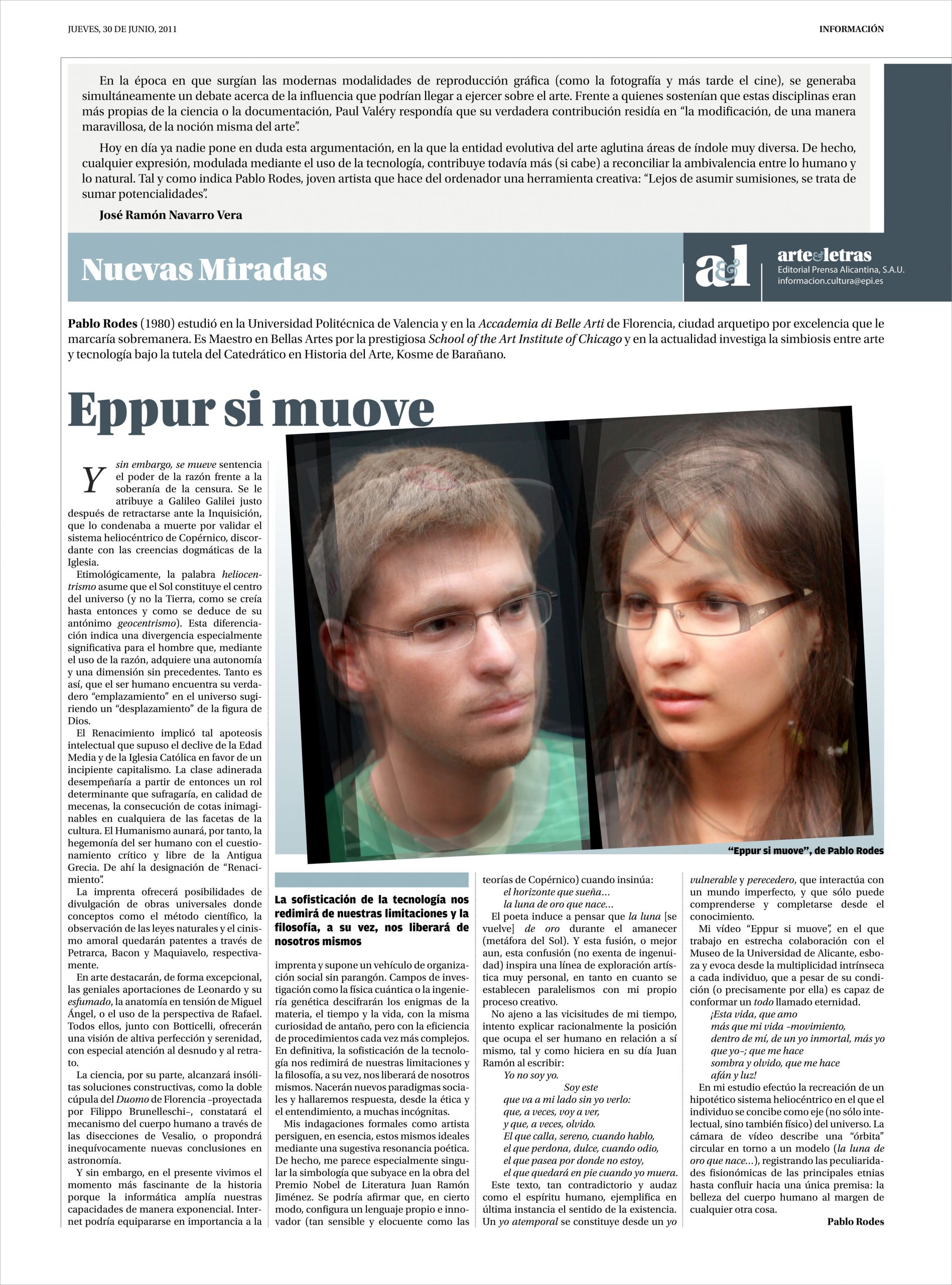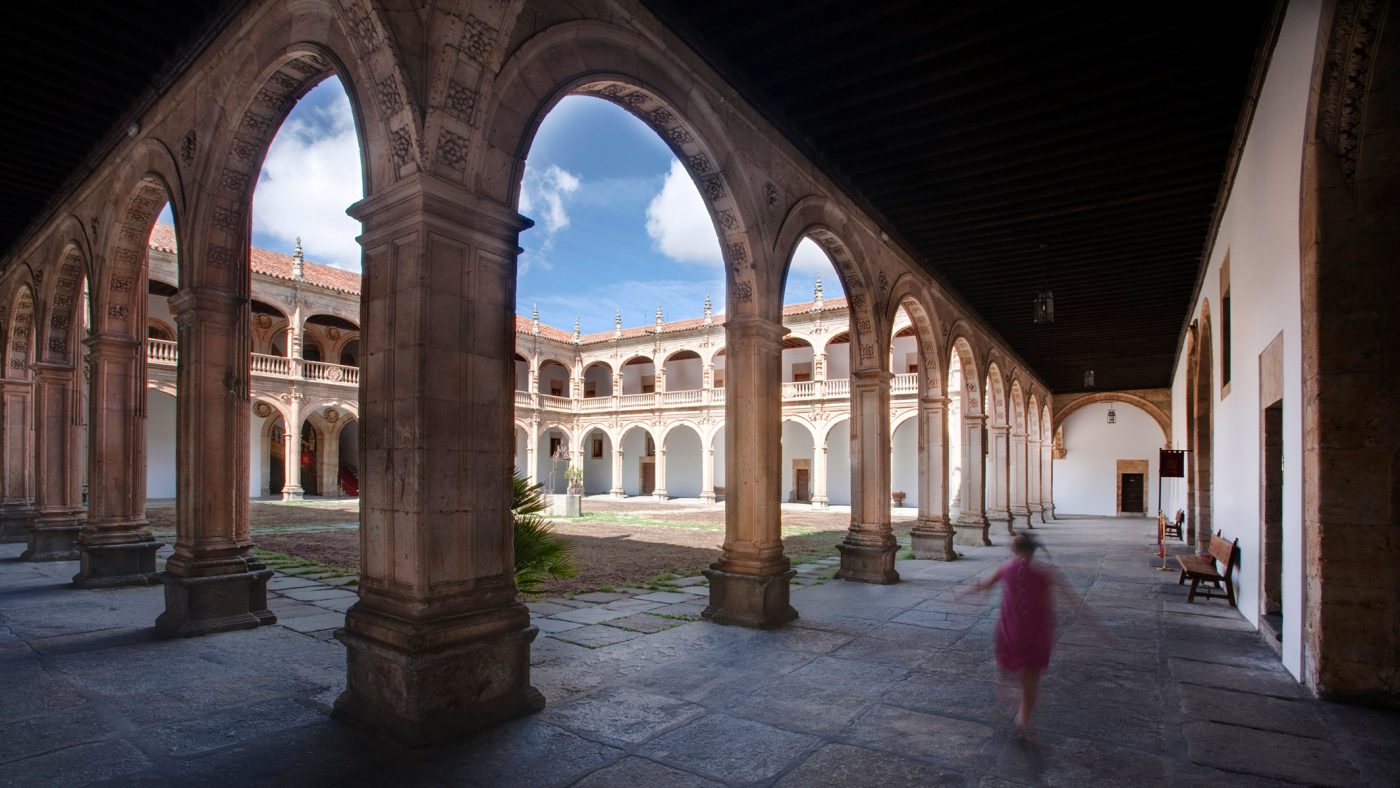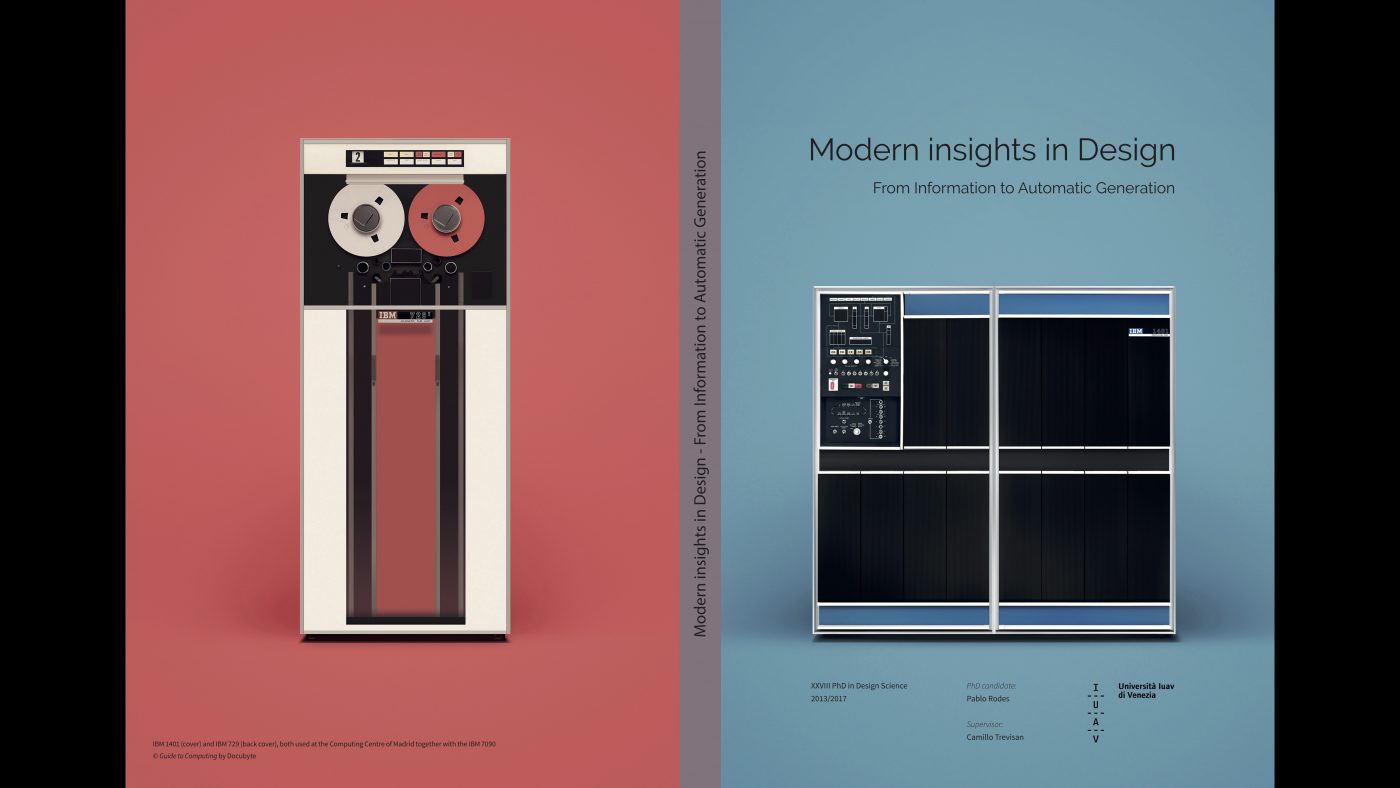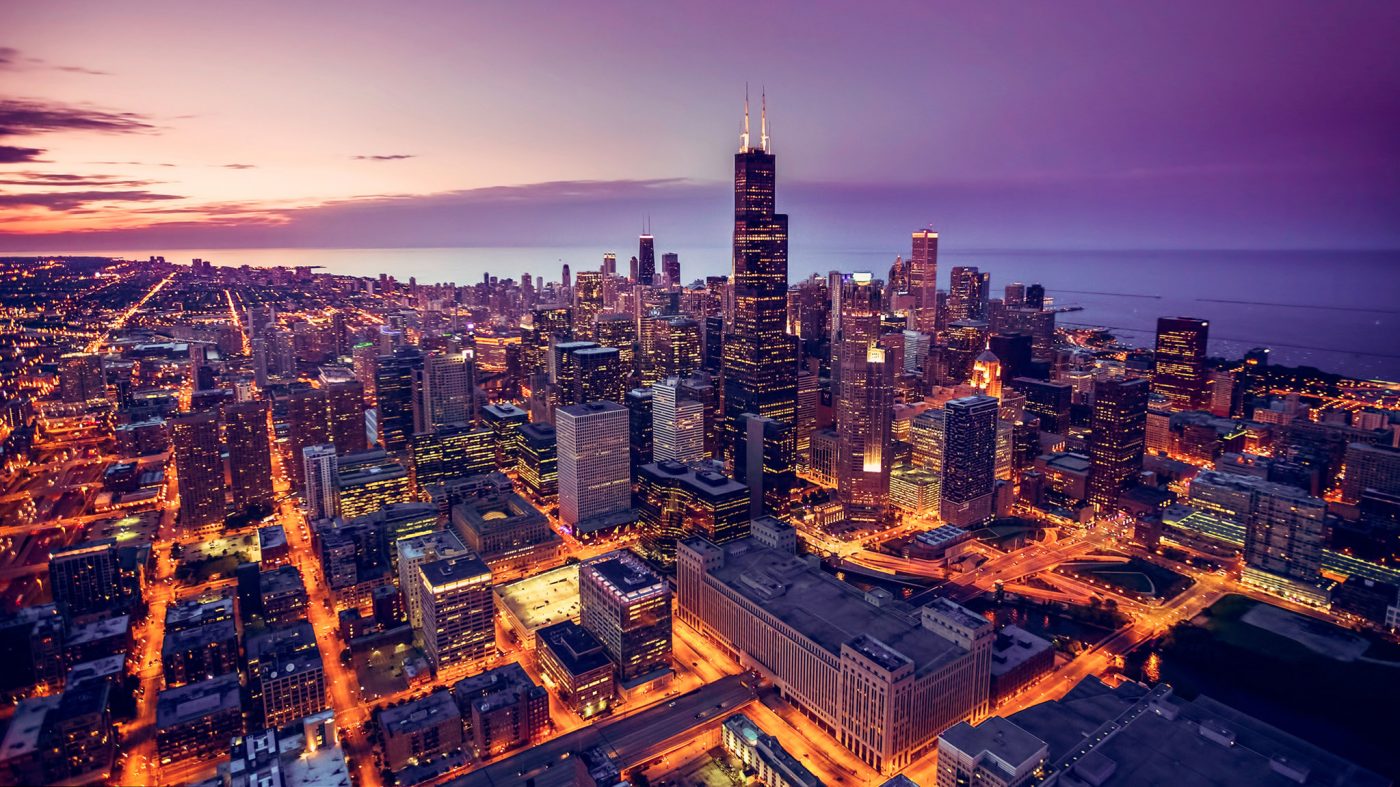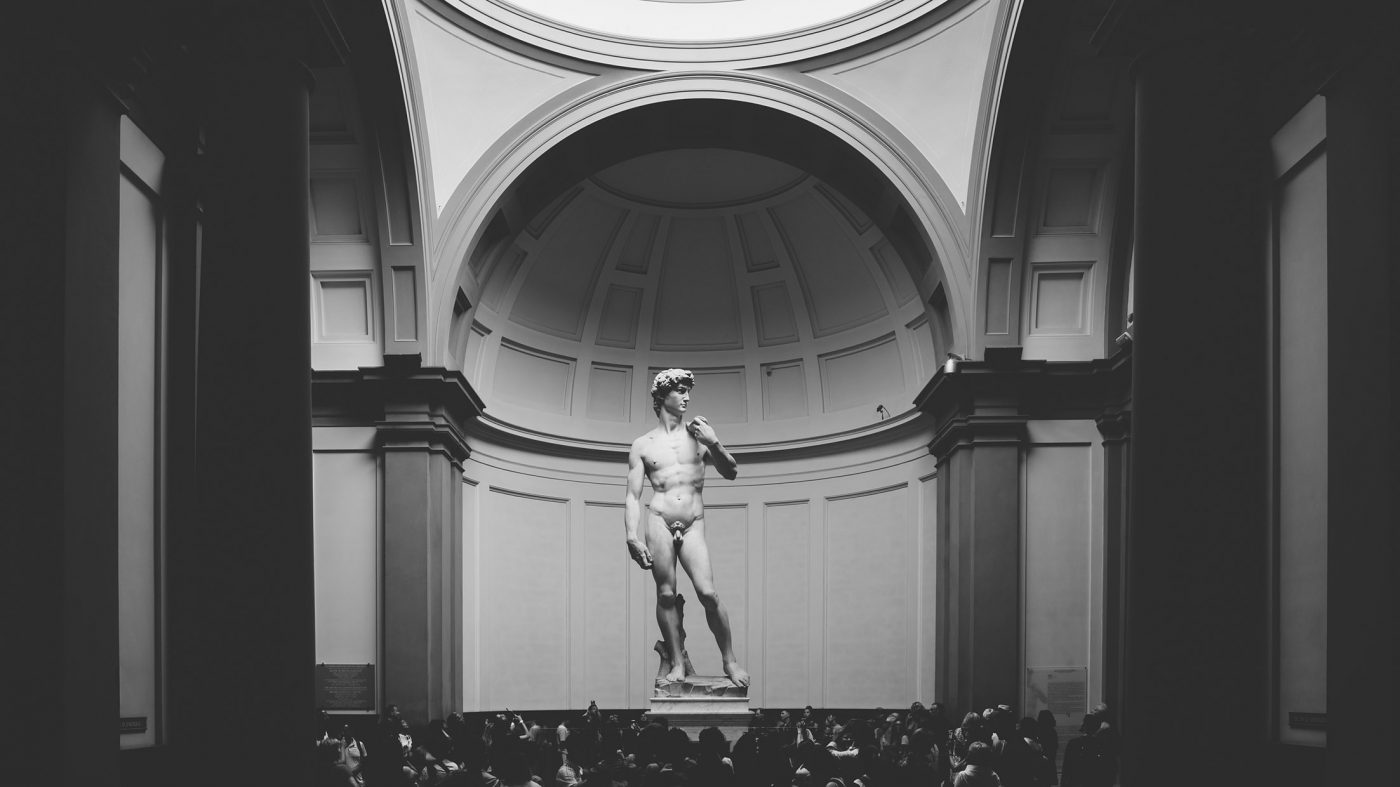
When modern forms of graphic reproduction emerged—such as photography and later cinema—a debate arose about their potential impact on art. Critics maintained that science and documentation were the more appropriate domains for these disciplines. In response, Paul Valéry famously noted that their real contribution lay in the marvelous transformation of the very notion of art. Today, many people accept this opinion: the growing nature of art continues to encompass increasingly diverse fields. Any form of expression shaped by technology further reconciles the duality between human creation and nature. Pablo Rodes, a young artist who uses the computer as a creative tool, explains: Far from accepting submission, it is about combining potentialities.
(José Ramón Navarro Vera)
Pablo Rodes (born in 1980) studied at the Universidad Politécnica de Valencia and the Accademia di Belle Arti di Firenze. The quintessential Renaissance city had a profound influence on him. He earned a Master’s Degree at the prestigious School of the Art Institute of Chicago. Currently, he is researching the symbiosis between art and technology under the mentorship of Professor Kosme de Barañano, a Full Tenure Professor of Art History.
Eppur si muove
And yet, it moves. This declaration, attributed to Galileo Galilei, embodies the power of reason over censorship. Galileo allegedly muttered these words after recanting his support for Copernic’s heliocentric theory, which had earned him a death sentence from the Inquisition for opposing the dogmatic beliefs of the Church. Etymologically, “heliocentrism” suggests that the Sun, rather than the Earth, lies at the center of the universe. This shift marked a profound moment in human history. Through reason, humanity gained autonomy and an unprecedented intellectual dimension, displacing the divine as the focal point of existence.
The Renaissance marked an intellectual revolution, signifying the decline of the Medieval Era and the Catholic Church while ushering in the rise of capitalism. Wealthy patrons played a decisive role in funding the arts, enabling the creation of extraordinary works across all cultural fields. Humanism, inspired by the critical and free-thinking traditions of ancient Greece, became the guiding philosophy of this era, lending the period its name: “Renaissance.” The invention of the printing press revolutionized the dissemination of knowledge. Figures like Petrarch, Bacon, and Machiavelli advanced key ideas: the scientific method, the observation of natural laws, and the pragmatic study of power. Leonardo da Vinci, Michelangelo, and Raphael were artists who pioneered new methods like sfumato, realistic anatomy, and linear perspective. Alongside Botticelli, they redefined portraiture and the human form, presenting it with serene dignity and idealized beauty.
Science, too, flourished during this period. Filippo Brunelleschi engineered the magnificent double-shell dome of Florence Cathedral. Vesalius’s anatomical studies unveiled the complexities of the human body. Meanwhile, astronomy made unprecedented strides, offering new insights into the cosmos. Currently, we live in one of the most transformative periods in history. Computer science is exponentially expanding human capabilities. The internet, in terms of cultural impact, resembles the printing press, offering unparalleled opportunities for social organization and collaboration. Emerging fields such as quantum physics and genetic engineering are unraveling the mysteries of matter, time, and life with the same curiosity as Renaissance pioneers—but with ever more sophisticated methodologies.
Technology’s growing sophistication is freeing us from physical limitations, while philosophy continues to liberate us from intellectual constraints. New social paradigms are emerging, and ethical, multidisciplinary approaches are answering humanity’s most pressing questions. These ideals, which I explore through poetic and symbolic resonance, are deeply rooted in my artistic work. The Nobel laureate Juan Ramón Jiménez has been a significant source of inspiration for me. His writing shows a unique, innovative language, both sensitive and eloquent, much like Copernicus’s scientific insights. In one of his verses, Jiménez writes:
The horizon that dreams…
the golden moon which is born…
The poet invites us to imagine the moon transforming into gold at dawn—a metaphor for the sun. This fusion, or perhaps confusion, imbued with naivety, inspires my creative process. It mirrors the associations between my inner explorations and my artistic endeavors. Despite the challenges of our time, I strive to reflect on humankind’s place in the universe, just as Juan Ramón did in his profound meditation.
I am not I.
I am this one
walking beside me whom I do not see,
whom at times I manage to visit,
and whom at other times I forget.
The one who remains silent while I talk,
the one who forgives, sweet, when I hate,
the one who takes a walk when I am indoors,
the one who will remain standing when I die.
This passage, both contradictory and bold, encapsulates the essence of human existence: a timeless self composed of a vulnerable and mortal ego that interacts with an imperfect world. We fully understand and complete existence through the pursuit of knowledge. In my video Eppur si muove, created in collaboration with the Museum of the University of Alicante, I explore each individual’s intrinsic multiplicity. Despite—or perhaps because of—our limitations, we have the potential to create something eternal.
This life I love
more than my life—movement
inside me, in an immortal ego more ego
than me; that makes me
shadow and oblivion, that makes me
eagerness and light!
In my studio, I recreate a heliocentric system in which the individual is the intellectual and physical axis of the universe. Via a circular orbit, my camera captures a model’s features while symbolizing the golden moon that is born… Through this process, I document the physiognomic traits of the major ethnic groups, ultimately arriving at one fundamental premise: the enduring beauty of the human body above all else.
Pablo Rodes
